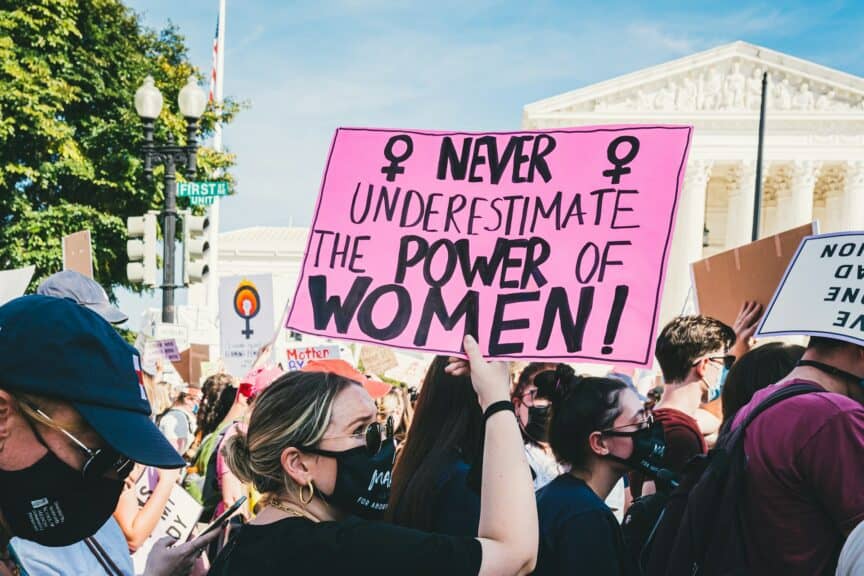Women’s rights have transformed dramatically over the last two centuries in the fight for gender equality. Women have been at the forefront of shaping history, from fighting for the right to vote to demanding equal pay. The journey hasn’t been easy, but each policy change has been a step toward equality.
However, as of 2023, women hold fewer than 30% of positions in several important areas. This includes the House of Representatives and the Senate. Women also comprise less than 30% of Fortune 500 CEOs and governors nationwide. This highlights the ongoing gender inequality in leadership positions.
The fight for true gender equality continues, with each victory paving the way for the next. Each landmark law and bold decision broke barriers and created new opportunities.

Table of Contents
 Top Key Policies That Shaped Women’s Rights in America
Top Key Policies That Shaped Women’s Rights in America
Here are four pivotal U.S. policies and social movements that reshaped women’s rights and changed the course of history.
1. The 19th Amendment – 1920
In January 1878, Senator Aaron A. Sargent introduced a constitutional amendment for women’s voting rights, but it stalled and was rejected in 1887 and again in 1914. In 1915, the president of the National American Woman Suffrage Association, Carrie Chapman Catt, linked the suffrage movement to the U.S. war effort in World War I.
Despite opposition from pacifists, Catt positioned the movement as patriotic. This strategy worked, and in his 1918 State of the Union address, President Woodrow Wilson endorsed women’s voting rights. On August 18, 1920, Congress ratified the Nineteenth Amendment, securing women’s right to vote and a win for women’s liberation.
2. The Equal Pay Act – 1963
The Equal Pay Act of 1963 was added to the Fair Labor Standards Act of 1938 as a significant step toward gender equality or equal rights. Under this policy, employers must pay men and women equally for the same work. By ‘same work,’ we mean work that requires equal skill, effort, and responsibility.
Before the act, studies showed women earned less than men for the same job. For example, women made $8 to $20 less weekly. This is about $4,260 to $10,760 less per year today. Even female college grads earned less than their male peers!
3. Title IX of the Education Amendments (1972)
Title IX of the Education Amendments of 1972 banned sex discrimination in all federally-funded schools and colleges. This law profoundly impacted gender equality in education, ensuring women had equal access to academic programs, activities, and sports.
As a result, the number of women enrolling in higher education institutions increased significantly, and opportunities in athletics and professional careers expanded. Title IX also played a crucial role in promoting female participation in traditionally male-dominated fields like science, technology, engineering, and mathematics (STEM). In short, it leveled the playing field for women, paving the way for female empowerment.
4. Roe v. Wade (1973)
In 1973, the U.S. Supreme Court’s Roe v. Wade decision established that the choice to continue or end a pregnancy is up to the individual, not the government. Legalizing abortion, linked this right to the privacy protections in the Fourteenth Amendment.
The Court upheld abortion as a fundamental right for nearly 50 years, protecting personal decisions about family and bodily autonomy. Although Roe v. Wade was overturned, ending federal abortion protections, the decision remains a pivotal moment in the fight for women’s rights.

 Gender Equality Is an Ongoing Fight
Gender Equality Is an Ongoing Fight
While progress has been made in women’s rights, the fight isn’t over. From the 19th Amendment to the ongoing struggle for equal pay, gender equality is still a work in progress. Achieving true gender equality will require continuous advocacy and action and challenging outdated systems. Our content hub for women is a step in the right direction.
At Zany Progressive, we believe in the power of collective action to create lasting change. As a progressive left-wing blog, we offer a space for people to unite. Here, they can share ideas and push for gender equality.
Together, we can actively push for a more inclusive and just society in the United States — one that values every voice and protects every right.
Join the conversation, and let’s make a difference together! Law shall not be denied!




